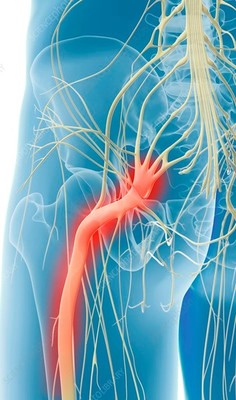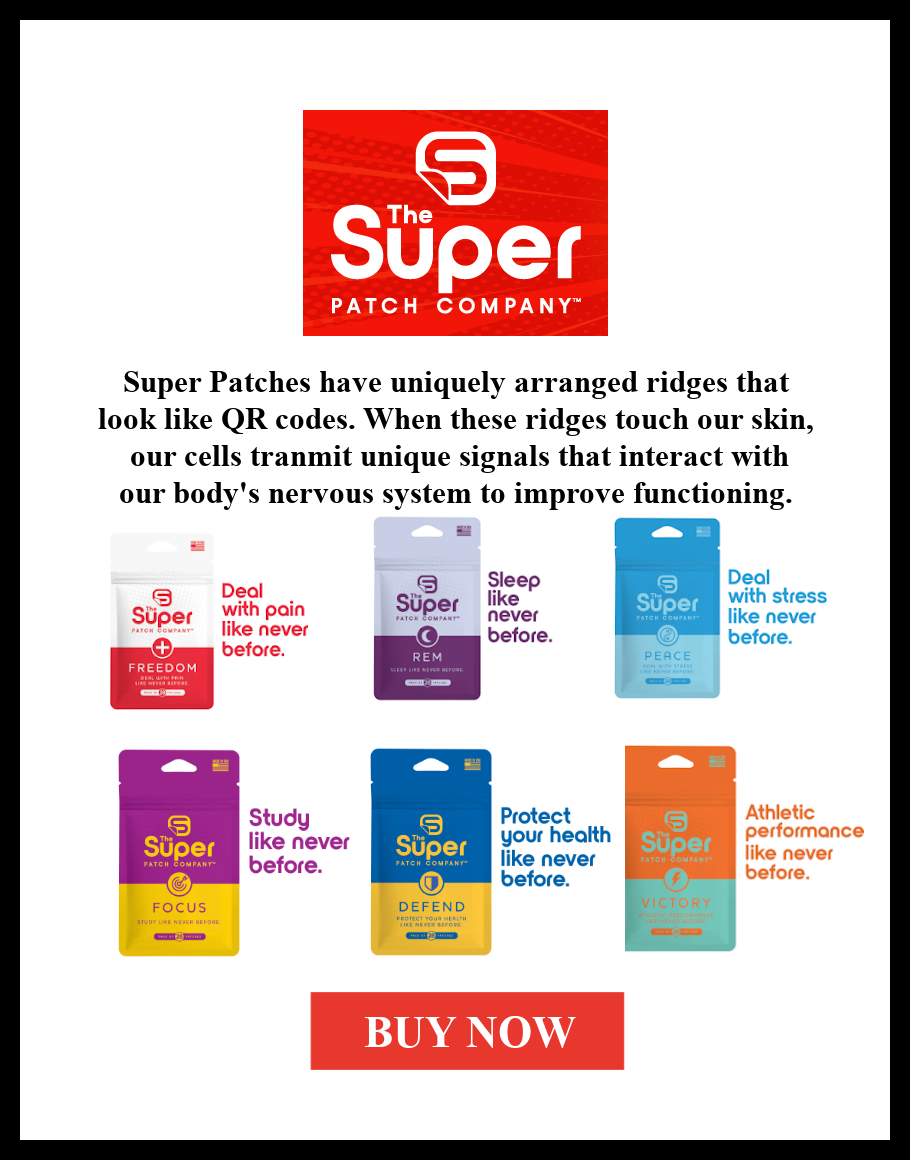
I see many patients complaining of what they call “sciatica.” What is sciatica, and what you can do about it.
Medical jargon is full of terms that don’t actually name a disease, but describe a set of symptoms, a syndrome; sciatica is that kind of term. If you have pain, numbness, weakness or tingling in your lower back, buttocks, and parts of your legs, knees or feet, you might call it sciatica because of its relation to the path of your sciatic nerve.
The sciatic nerve is the longest and widest nerve in your body. It starts in your lower back, runs through your buttocks, divides into two branches in your thighs and runs down each leg to your feet. When the fibers of this nerve are compressed or irritated, it hurts big time.
Fortunately, my MYK treatments have often been effective in modulating the pain of sciatica.
What’s happening in your body?
Depending on the location, your ‘sciatic’ pain will have a different name. For example, the piriformis muscle goes from your sacroiliac joint (bottom of the spine) to your hip bone. Alas, the sciatic nerve runs right under the piriformis, so if the piriformis spasms or is too tight, then you have instant sciatica. But it’s called piriformis syndrome.
Sciatica can result from a herniated (ruptured) disc, a bone spur on your spine, or stenosis which is narrowing of your spinal canal. The fetus weight during pregnancy, or even vigorous coughing or even sneezing can result in sciatica. More rarely, it may be caused by one vertebra sliding over another. Arthritis, osteoporosis, a tumor, a blood clot, or an abscess can be a source of pressure on the nerve, as well.
Herniated disc
Between each pair of vertebrae in your spine is a cushioning pad that we call a “disc.” The disc consists of a tough, fibrous outer ring, the annulus, that contains a soft, gel-like central portion, the nucleus. In this most common cause of sciatica (90 percent?), the annulus gets torn, allowing the nucleus of the disc to bulge out. This puts pressure on nerve fibers, and also releases an inflammatory chemical called TNF that causes pain without compression; stenosis may release TNF as well.
And isn’t it really annoying when your doctor says something like: ‘You know, Keller, age is a factor!’ Yes, indeed, aging, as well as daily wear and tear, often leads to some unfortunate changes in the spinal discs. Specifically, that soft, cushioning nuclear gel becomes a bit stiff, and so more of the load it bears is transferred to the annulus. This leads to cracks in the ring, sometimes big enough to allow the nuclear gel to bulge through.
Severe herniation
The bad news is that severe herniations may require surgery. In fact, please seek medical advice if:
. There is sudden, severe pain in your low back or leg, and numbness or weakness in your leg.
. The pain follows a violent injury.
. You have trouble controlling your bowels or bladder.
Minor herniation
The good news is that most minor herniations heal within some weeks. And in the meantime, to help control the pain, you might try anti-inflammatories like aspirin, ibuprofen or naproxen, perhaps combined with a muscle relaxant (ask your doctor).
Complementary Therapies
Simple therapies that balance your body and nervous system often relieve sciatic pain. The medical massage MYK system I use has helped many, as well as have yoga and acupuncture. In addition, I recommend using an ice pack for 20 minutes two or three times a day on painful areas.
Prevention
The best therapy for sciatica is preventing it in the first place:
- Keep your weight under control.
- Get regular physical activity.
- Don’t sit for extended periods.
- Don’t carry your wallet or anything else in your hip pockets.
- Wear an elastic belt instead of the leather most men use.
- Do stretching exercises daily. For example, while sitting, put your left ankle on top of your right knee. Grasp your left knee, and pull diagonally upward toward your right shoulder. Hold this for about 30 seconds, relax for a few seconds and repeat the stretch. Now do the same with your right ankle on your left knee, pulling your right knee toward your left shoulder. Caution: don’t overstretch, if it hurts, don’t do it!
- Avoid especially heavy lifting and exaggerated twisting of the torso.
Illness as metaphor
I have seen some aspects of illness that might be viewed metaphorically. Sciatica, for example, produces pain in the buttocks, and so I’m not surprised to receive a positive answer to the question: “Has something in your life become a pain in your butt?” Or with neck issues: “Is there something going on that’s a pain in the neck?”
It’s not that recognizing the connection between your life and your pain is going to cure your problem instantly, but stress and other emotions can get locked in your muscles, causing pain. Recognizing a possible relationship between pain and other parts of your life can help release those emotions and open you to new possibilities for healing.
Bob Keller maintains a holistic pain management practice in Newburyport. His book, “Making Sense of Medicine: Medical Matters Made Simple,” is available locally or online. He can be reached at 978-465-5111 or bob@SeacoastMedicalMassage.com.










